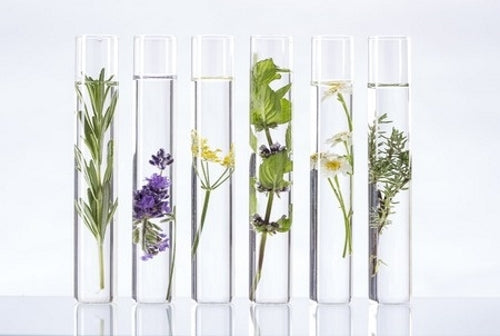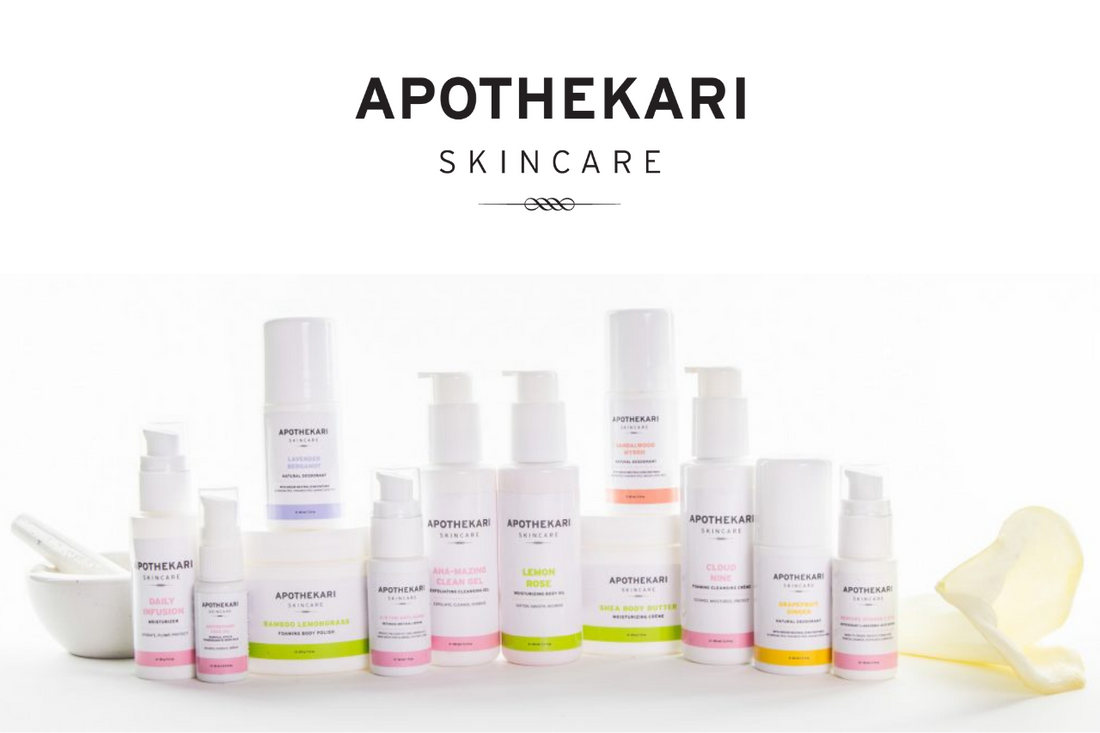Blog
Sugar Face, Sugar Skin
Sugar Face (aka sugar skin) is a term that we are starting to hear more often. It’s become a trending topic as we begin to increasingly appreciate the detrimental effect that sugar has, not only on our health, but on our skin as well. Shop All Apothekari Does Sugar Ruin Your Face? You may think of sugar face as a topic discussed only amongst celebrities, but dermatologists and nutritionists are talking about it as well. Just how does sugar age us? A recent scientific review discusses how the consumption of sugar reacts with proteins, creating elements called advanced glycation end-products (AGEs). First described in the context of diabetes, AGEs are formed through a type of non-enzymatic reaction called glycation. In the skin, these substances lead to: Wrinkled skin Sagging under the eyes A gaunt look to the face Thinning of the skin Painful pimples Hardened cell structures. Think of the way arteries harden to cause coronary heart disease. The process is similar in skin cells. Sugar can also weaken the body’s immune system, leaving it less able to fight off bacteria, which may be implicated in acne. Sugar face or sugar skin results in a detrimental impact on your appearance. But, the health risks of excessive sugar consumption can be great too. Along with an increased risk of things like type 2 diabetes, eating too much refined sugar creates inflammation in the body, which can increase the risk of heart disease and cancer. When blood sugar levels drop, stress hormones are released resulting in anxiety and tension as common side effects. The immune system may also be impacted affecting thyroid function, energy levels and digestion. How Long Does it Take to Get Rid of Sugar Face? If you’re trying to avoid sugar, you should be mindful of foods where sugar is more hidden. Fruit juice, fruit and ‘sugary’ vegetables like beets and carrots are also high in sugar. Pay attention to where a food falls on the glycemic index and seek out those that rank lower, which will help to slow down glycation. You don’t have to cut out fruit completely but think of it as a treat, opting for a diet that consists mainly of leafy green vegetables, lean proteins and healthy fats. Think you can never have cupcakes again? Take heart. Great skin is made up of a combination of factors including genetics, skin care, along with environmental and lifestyle factors. Sugar, an inflammatory food, ranks high on the list of things to avoid, but you should also be paying attention to protection from environmental toxins (like pollution and UV rays), managing stress and getting adequate sleep. Thankfully, it’s never too late for lifestyle changes. Sugar can speed up aging, but adopting healthier habits and a great skin care routine can start to slow this process – whatever your age. Sugar face? We’ve got you beaten! In previous posts, we’ve discussed the other three faces that the doctor describes: Gluten Face – Characterized by a range of symptoms including psoriasis, eczema, acne or dry skin. Wine Face – Typically associated with individuals who consume one or two glasses of wine or other alcohol most nights of the week, skin becomes dehydrated, making fine lines and wrinkles look worse. The face may become red and make the individual appear older. Dairy Face – Characterized by a range of symptoms including swollen eyelids, bags and under eye dark circles, small white spots and bumps on the chin.
Learn morePollution Protection. It's a Thing!
If you care about your skin, you may have been reading about pollution protection. Just when you think you’ve got this whole skin care thing figured out, along comes something new! And yes, it’s a big thing. SHOP RADIANT SKIN SET Is this fear mongering or is pollution protection something we should really be concerned about? From free radicals to environmental attacks and noxious gases, the headlines make it sound like the air is out to get us. We already know that environmental pollution in the form of poor air quality is a major health problem worldwide. And now, we are starting to recognize the significant effects of air pollution on the skin as well. A recent study shows that cigarette smoking and soot levels are known to promote clinically visible skin changes. And, more recent information, demonstrates the association between NO2 levels (generated from combustion such as from vehicles), and cheek lentigines (brown spots) in 50 year olds from Germany and China. Before rushing out to buy pollution protection treatments, it’s important to understand just what we are protecting ourselves against. It’s suspected that ozone – the toxic gas that forms when UV light hits mono-nitrogen oxides (from combustion exhaust) – is one of the primary causes of pollution-related skin damage. Ozone is thought to damage skin by oxidizing the lipids (fats) that bind our skin cells together, resulting in a cascade of DNA-damaging events. Isn’t Sunscreen Enough? If you apply sunscreen daily, you’re off to a good start. Sunscreens protect skin against damaging UV rays, but they aren’t necessarily going to offer much in the way of pollution protection. When it comes to pollution protection, antioxidants – Vitamins C and E, green tea, alpha lipoic acid, resveratrol and retinoids, for example – are your best friends. Antioxidants work by binding to free radicals – unstable molecules generated by pollution – and counteracting them before they damage cells. One single ingredient can’t do the job, so don’t get caught up in the hype of finding the “best” antioxidant as it doesn’t exist. Instead, there are lots of good ones, so the more, the merrier! Don’t stop with the antioxidants at night. Pollution is around 24/7, day and night, so you need to use antioxidants at night too. Other tips include cleansing (to remove dirt and grime, which contain particulate matter, the tiny harmful particles in the air) and skin barrier repair with good moisturizers. Keeping your skin strong and healthy helps to keep harmful things out. Those of us at Apothekari wouldn’t dream of starting our days without Apothekari Bespoke Vitamin C Serum. Available in both a 10% and 15% concentration, this is the first thing we layer on every morning under our sunscreen. Loaded with free radical fighting vitamins C and E along with other potent actives, it’s one of the best pollution protection products available anywhere. At night, you can’t beat A is for Anti-Aging, which boasts antioxidant rich retinaldehyde and niacinamide. Pollution Protection? We’ve got you covered!
Learn moreThe Natural Skin Care Conundrum: Better for You?
Natural Skin Care – is it better for you? Customers are demanding safer products and all of us in the skin care industry support this. Yet, many companies would have us believe that only natural and/or organic ingredients are better and safer for the skin. The truth, however, is when it comes to personal care products, “pure,” “natural” or “organic” have no legal meaning. And although many natural skin care products or organic ingredients are purported to be better or safer, they may actually be bad for skin! Shop All Apothekari The marketing machine is a big one and whether cosmetics companies are intentionally misleading customers or whether they really believe some of the things they say, is hard to know. Many companies sell products with ingredients that aren’t really natural or contain natural ingredients that are a problem for skin. By the same token, there are good synthetic ingredients that aren’t a problem for skin and some that are. It’s important to look beyond the marketing claims. Natural skin care products, often made with plant derived ingredients, aren’t bad for skin. In fact, they can offer many benefits. When they are incorporated into treatments such as facial oils, moisturizers and cleansers, they can be very effective. In more targeted treatments, however, synthetics often have the upper hand. And that is because your skin is able to more easily utilize a chemical in its active state (retinaldehyde, niacinamide, l-ascorbic acid) than it is of breaking down a whole plant extract into its individual components. At Apothekari, we formulate with a range of both synthetic and natural ingredients to deliver the best possible outcomes for your skin. Although sometimes it is, here are 5 reasons why a natural product may not always be your best choice: 5 Reasons Why a Natural Product May Not Always the Best Choice ‘Organic’ ingredients or natural skin care products don’t necessarily possess greater inherent safety than another chemically identical version of the same ingredient. In addition to purity concerns, natural extracts are less regulated than synthetic ingredients. The FDA regulates the concentration of synthetic ingredients in skin care products to minimize the potential for irritation, inflammation, and allergic reactions. Natural extracts, however, are generally permitted in concentrations up to whatever the manufacturer feels comfortable with. ‘Natural’ skin care products may be harder to preserve against contamination and mold than synthetic versions. Organic seals of approval on cosmetics should NOT be taken as proof of health benefits or efficacy. Even the USDA Organic seal is a marketing program, not a safety program. (Case in point, a chocolate cake made with organic ingredients is still not the best nutritional choice for anyone). Many natural and organic ingredients (and synthetics aren’t exempt from this either) can be harsh, abrasive and potentially sensitizing. Essential oils are one example. Sure, they smell great but they can be highly problematic when applied to the face. Whole plant extracts are not always better than concentrated ingredients. When you apply a whole plant extract, you rely on your body and your skin to break it down to its active components. This is dependent on the health of your skin, your genetic make-up, etc. When you apply chemical ingredients – retinol, niacinamide, vitamin c – to skin, they are readily available in their active state. Just as important, is that chemical ingredients are often supported by numerous, well-controlled studies to demonstrate their efficacy. This is not always the case for natural, whole plant extracts. I’m not ‘natural’ skin care bashing here, but trying to set the record straight. Natural ingredients aren’t necessarily safer or better than synthetic ones. And synthetic ones aren’t necessarily bad. The truth is that there are both natural and synthetic ingredients that are safe and effective for skin and you shouldn’t be misled to believe that this isn’t the case. At Apothekari, we rely on science to formulate our products with a combination of purified synthetics — retinoids, vitamins C and E, niacinamide, alpha hydroxy acids — as well as botanicals such as aloe juice, powdered bamboo, shea butter and plant extracts (horse chestnut bark, olive leaf, willow herb flower). Our goal is to create products that are safe and effective. And that’s one thing we won’t compromise on!
Learn more4 Steps to Great Skin
The truth? Beautiful skin needn’t be complicated or take lots of time. Years of researching products and ingredients have allowed me to distil the process into 4 simple steps – Cleanse, Prevent, Protect and Treat. Shop All Apothekari While the products may differ depending on your skin type and specific needs, these 4 steps will help keep your skin looking young and healthy, whatever your age. Step 1: Cleanse (AM/PM) Cleansing helps keep your face free from make-up, dirt and oils, which may lead to blemishes, redness or irritation. It also provides a clean surface to better absorb active ingredients and a smooth base for make-up. Depending on preference, you may opt for one step (just a cleanser) or two-step cleansing (cleansing oil/make-up remover followed by a cleanser). Choose from Apothekari Cloud Nine Foaming Cleansing Crème, suitable for all skin types, including sensitive skin and individuals with rosacea or Apothekari AHA-Mazing Clean Exfoliating Cleanser Gel, an exfoliating cleanser featuring sugar cane extract and a triple combination of alpha hydroxy acids (AHAs) to help smooth fine lines and wrinkles, gently exfoliate clogged pores and promote cellular renewal. Designed for all skin types, but caution if you are overly sensitive or have rosacea. Optional: Toners. Toners are a great way to great way to deliver targeted actives for acne, rosacea or dry skin. For the rest of us, their use is a matter of personal preference. Step 2: Prevent (AM/PM) Prevent skin damage and your skin will be thankful for many years after. Antioxidants such as Vitamins A, C and E, ferulic acid, pomegranate seed oil, astaxanthin and green tea are backed by sound science to support their efficacy in aiding the prevention of skin damage associated with free radicals and UV rays. Antioxidants can also boost the effectiveness of your sunscreen. Apply antioxidants in the morning to battle the daily assault of pollution and ultraviolet rays and at night to help boost collagen production and fight against factors that age skin. Apothekari Bespoke Vitamin C 10% or 15% are our made to order high potency Vitamin C serums containing a range of antioxidants including L-ascorbic acid, ferulic acid, phloretin, astaxanthin, lycopene and pomegranate seed oil. It also features hyaluronic acid and glycerin to moisturize. Step 3: Protect (AM) You may not know it, but the sun’s UV rays are responsible for more than 85% of skin aging. For this reason, the most important skin care product you’ll ever need is sunscreen. Use it daily, year round and you’ll reap the rewards. Sunscreen filters can be divided into two main types – chemical and physical. Chemical filters interact with the skin’s top layer to absorb and render UV rays harmless. Physical filters sit on top of the skin to deflect UV rays. Sunscreens may contain either one or a combination of the two. While both types are effective, my preference is for those that contain physical filters. Why not opt for a chemical free version if it offers the same benefits? Zinc oxide and titanium dioxide comprise the two physical blocking filters. Zinc oxide covers the full range of the UV spectrum (both the longer UVA (aging) and shorter UVB (burning) rays. Titanium dioxide doesn’t block all UVA rays so I’d steer clear of sunscreens formulated with only titanium dioxide as a sun filter. Studies have shown zinc oxide to safe, stable upon sun exposure and effective. Our Apothekari Shade SPF 30 delivers broad spectrum, UVA/UVB blocking protection in a non-whitening formulation containing additional free radical fighting benefits. Step 4: Treat/Correct (AM and/or PM) Once you have the basics of the above 3 steps covered, your skin may need a bit of extra help. Depending on your individual needs, Step 4 delivers just that. One ingredient that is a must for anyone concerned about youthful skin, is a retinoid. Derivatives of Vitamin A, retinoids provide a range of benefits to skin including: a reduction in the appearance of wrinkles and fine lines; an increase in the production of collagen and elastin; an increase in skin cell turnover; skin brightening; a reduction in the appearance of blemishes and hyperpigmentation; an increase in skin moisture content; protection against UV damage and; a reduction in oil production. It may sound too good to be true, but it’s not! A is for Anti-Aging Retinal Serum contains stabilized retinaldehyde – an effective yet gentle treatment. If you have had problems incorporating a retinoid into your regimen before, try A is for Anti-Aging. Many of our customers unable to use other retinoids are able to tolerate it well. *Caution with rosacea or sensitive skin. If you have dry skin, incorporate a moisturizer like our Daily Infusion Moisturizer – apply day and/or night as required. Oily Skin, Dry Skin, Rosacea, Hyperpigmentation, Wrinkles/Fine Lines and Eye Concerns require specific protocols. Watch the blog for future posts as we discuss those in more detail. Here’s to beautiful skin!
Learn more



